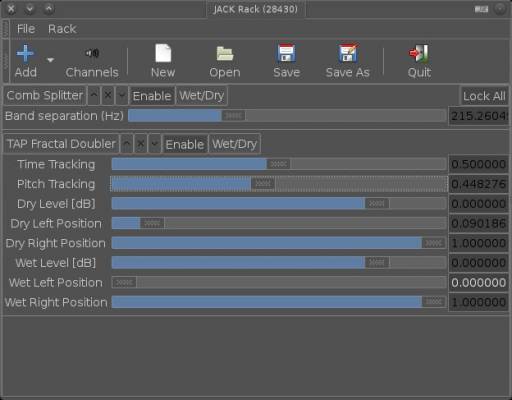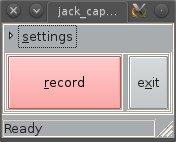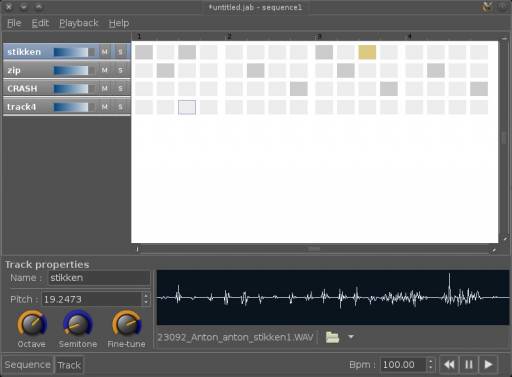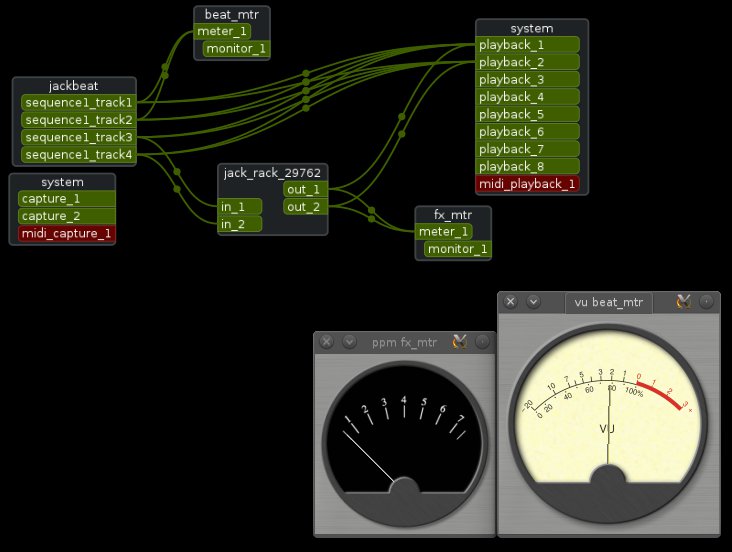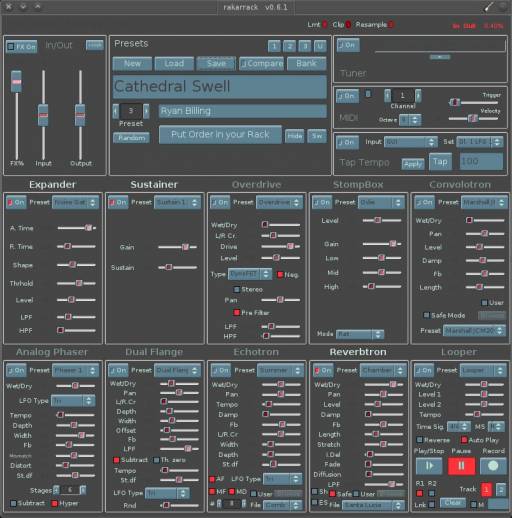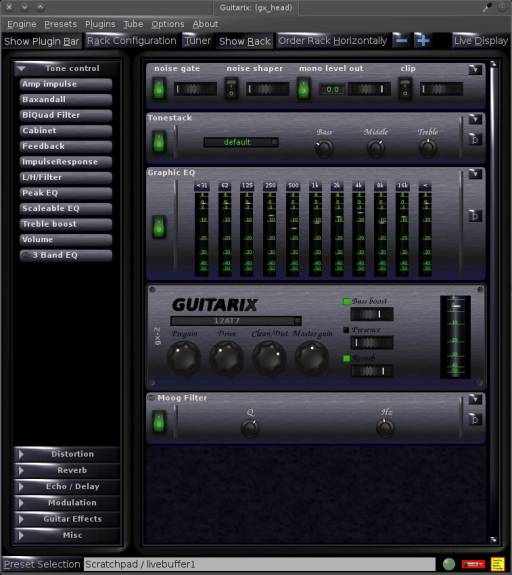**This is an old revision of the document!**
Since the JACK audio system runs as a server, it is ideally suited for smaller client applications which can plug into it, and combine one another's features to create a modular studio setup much like one would have in the physical world. There are several small (and sometimes not-so-small) sound applications that expect to be used as clients of the JACK server.
Strengths [Weaknesses]
Modular
One of the best things about open source software is the variety in what is available. With modular tools, you can pick and choose what to use, and chain them together through JACK.
Roadie-Friendly
If you are accustomed to real-world gear and all the cables and sub-mixers MIDI pass-throughs and unsolvable routing puzzles that go along with it, going modular will feel refreshingly familiar. Design the sound studio of your dreams, all on the comfort of your own computer screen, and without the danger of tripping over cables!
Weaknesses [Strengths]
Modular
Since there is no integrated environment (a DAW) managing the parts of a modular studio, all settings and routing must be managed by the user.
Unmanaged
If you are not used to real-world studio set-ups, understanding how and why MIDI and audio signals need to be routed and processed could be confusing at first. Conversely, you might have started out with hardware and are happy to give it up for a managed environment.
Install
The point of using modular applications is that they are independent of one another. Installing them, therefore, is not just one process; each must be installed separately. Because open source creativity is so prolific, this section contains only a small sample of the applications available for a modular studio, governed mostly by the applications having coincidentally been named “Jack Something”. Other Jack-compatible applications are listed separately (such as Yoshimi and Sooper Looper and Linux Sampler). The point of this section is partly about the applications themselves, part about the ability to maintain a modular studio, and partly about making sure you are able to sanely track what you use to make sounds.
JACK Rack
Jack-Rack is a straight-forward, no-frills host for LADSPA effects. It enables you to use any LADSPA (version 1) effect unit on your system as a stand-alone application rather than as a plug-in for a DAW.
After you launch jack-rack, add effect units via the Add button in the top toolbar or its menus. Each effect creates a JACK input and output, so you can send any signal into each effect and the processed signal to anything else in your studio.
When using jack-rack, its sessions must be saved along with your project in order to be restored the next time you use the rack. Save sessions in File → Save. A jack-rack session contains only what effect unit is loaded into the rack, not the routing in and out (for the routing, the over-all JACK session must be saved with a tool like aj-snapshot .
JACK Capture
Jack Capture is a recorder for whatever is streaming to the System Out JACK port. This means that you can record improv or sequenced pieces on the fly; it's the Master Out for your modular studio.
There is no configuration required; Jack Capture attaches itself to the master output of JACK no matter what.
Jack Capture handles its own settings (not its routing), and there isn't much to be set; choose the file format and bitrate, and Jack Capture will maintain its settings across sessions.
JackBeat
Jackbeat is a stand-alone sequencer for JACK. With it, you can queue up samples, loops, and beats and play it in sync with the rest of your JACK studio.
Install Jackbeat from StudioWare.
Using Jackbeat is fairly intuitive. Load a sample using the track panel properties or the Edit menu. Toggle with a click (or b on your keyboard) the cells in the grid workspace to sequence the sounds.
Navigation within the grid workspace can be keyboard driven (use the arrow keys), or you can use the mouse.
Increase the size of your workspace with the Double function, in the Edit menu.
Use Shift Click (or press N on your keyboard) to toggle a “mask” (or “negation”) for any given beat. This mutes the track during the duration of that beat.
Meter Bridge
Calf Jack Host
Rakarrack
Guitarix
Non
A modular studio. The “non” DAW. See the section on non.


